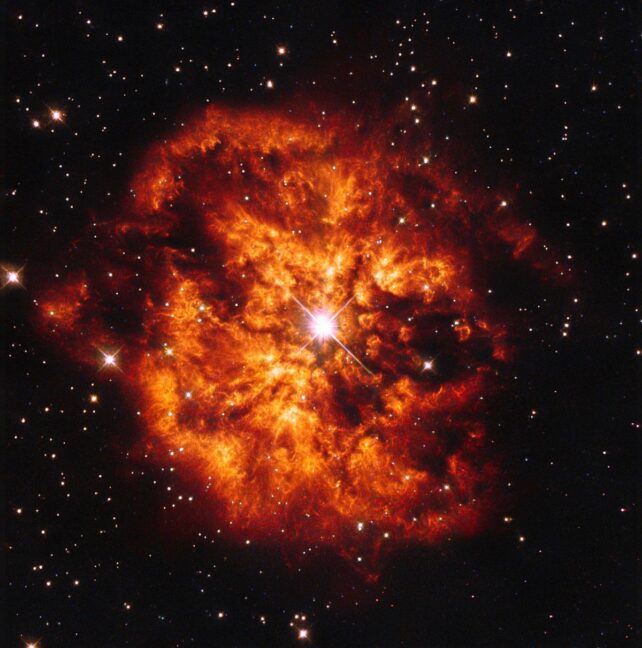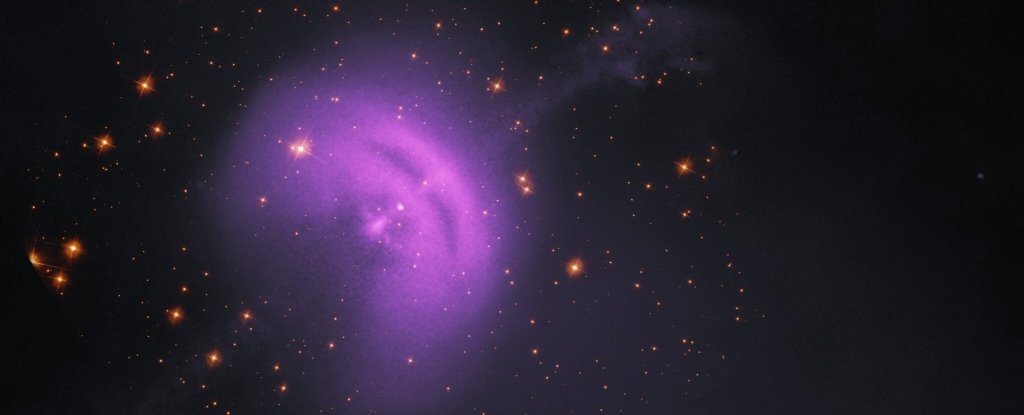The most powerful cosmic-ray electrons and positrons ever detected slamming into Earth’s atmosphere carry energies so high they can only have come from relatively close by, new research has revealed.
We’re quite safe and protected down here on Earth’s surface, shielded by an atmospheric bubble, but our planet is under constant bombardment from cosmic rays.
We don’t know a lot about these powerful particles hurtling through space. But an observatory in the desert of Namibia is bringing us a little bit closer to understanding their origins.
The H.E.S.S. Observatory has detected electrons and positrons with energies up to 40 teraelectronvolts. Collectively, these are known as cosmic ray electrons, or CRe.
These are extremely rare, but their energy suggests they all emanated from the same corner of the Milky Way as the Solar System – and possibly even from the same source.
It’s going to be a while until we know where they did come from, if we ever do, but the paucity of candidates within the specified volume of space may narrow it down a little.
“This is an important result,” explains astrophysicist Kathrin Egberts of the University of Potsdam in Germany, “as we can conclude that the measured CRe most likely originate from very few sources in the vicinity of our own Solar System, up to a maximum of a few 1,000 light-years away, a very small distance compared to the size of our galaxy.”
CRe represent a very small proportion of all cosmic ray particles, and are thought to emerge from extreme objects in space – things like supernova remnants, the immediate vicinity of black holes, and ultradense stars such as pulsars. Scientists think these objects accelerate cosmic ray particles to high energies and send them out zooming through the Universe.
When they slam into Earth’s atmosphere, they are, briefly, traveling a little faster than the speed of light in the atmospheric volume. This creates a phenomenon called Cherenkov radiation – the luminal equivalent of a sonic boom. This radiation is very faint; and it’s this faint Cherenkov radiation that H.E.S.S. was designed to detect.
It’s not only CRe that cause this phenomenon in the atmosphere. Gamma rays create a similar effect. This makes identifying CRe somewhat challenging.
“CRe are electrons, thus charged particles forming matter, whereas gamma-rays are photons, that is light,” astronomer Mathieu de Naurois of the French National Center for Scientific Research told ScienceAlert.
“Gamma rays travel straight in the Universe, thus allowing us to pinpoint the sources, whereas electrons have chaotic trajectories, as they interact with the magnetic field. Both produce electromagnetic showers or particles when they enter the atmosphere, and are very difficult to distinguish from each other.”
To identify high-energy CRe, the researchers had to pore over H.E.S.S. data, identifying CRe candidates. Their final list of candidate events probably also includes some gamma rays; but the pool is large enough to draw some statistical inferences.
The energies range up to 40 teraelectronvolts, more powerful than any CRe we’ve detected hitting Earth to date.

CRe detections with energies higher than a teraelectronvolt are very rare. That’s because, as they move through space, they lose energy rapidly.
“In synchrotron radiation, charged particles interact with the interstellar, galactic field. They acquire a spiral trajectory around the magnetic field lines, and radiate electromagnetic radiation, from radio up to X-rays. By doing so, they lose energy,” de Naurois said.
“In the so-called ‘Inverse Compton Scattering’, a charged particle interacts with ambient light. They interact with a low-energy photon and give most of their energy to it. The process is called ‘Inverse Compton’ because it is the reverse of the Compton scattering, in which a high-energy photon scatters off an electron from the medium and boosts it to high energy.”
Since the CRe lose energy so quickly, the candidate events must have traveled from nearby space to remain so powerful by the time they reach Earth. We can’t track them to a source; their trajectories are too unpredictable; but there’s something else about their energies that may be a clue. There’s a distinct lower cut-off point at 1.17 teraelectronvolts.
“The fact that the change of slope is sharp indicates that it’s only a handful of cosmic sources, if not only one, that produces these electrons,” de Naurois explained.
“Otherwise the energy spectrum would be the superposition of the contributions of different sources with breaks at different energy, resulting in a much smoother curve.”

Because the volume of space from which these CRe could have emerged is so small, that means the pool of potential sources is also small. Candidates include a supernova remnant called the Monogem Ring; a dying star of the Wolf-Rayet type called γ2 Velorum; or a pulsar like Vela or Geminga.
But it’s also possible that the source is a supernova remnant so old that it has dissipated and faded from view. We just have no way of knowing right now.
Nevertheless, this extraordinary work brings us a step closer to understanding how the Universe is energized. The team plans to investigate further to see if they can identify a preferred direction from which the CRe arrive.
It’s going to be tricky, but the potential rewards are high, and the increased candidate pool will be invaluable to the study of CRe going forward.
“Our measurement does not only provide data in a crucial and previously unexplored energy range, impacting our understanding of the local neighborhood, but it is also likely to remain a benchmark for the coming years,” de Naurois says.
The research has been published in Physical Review Letters.





